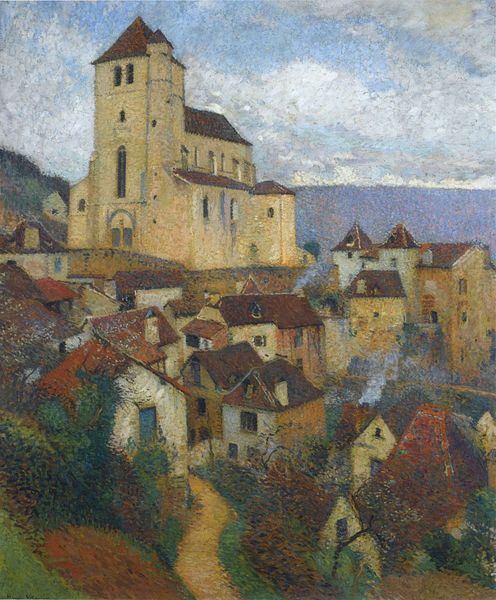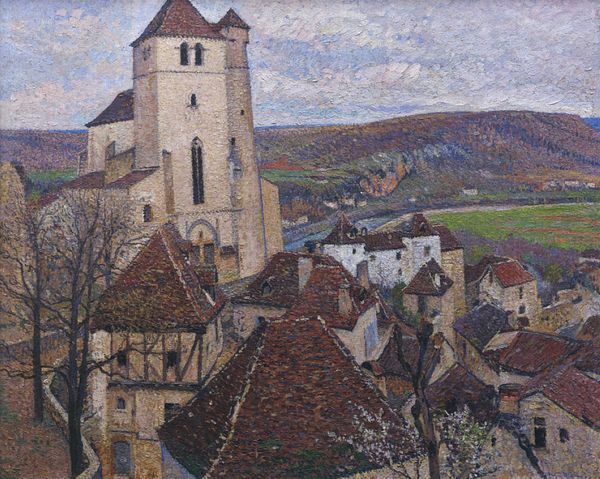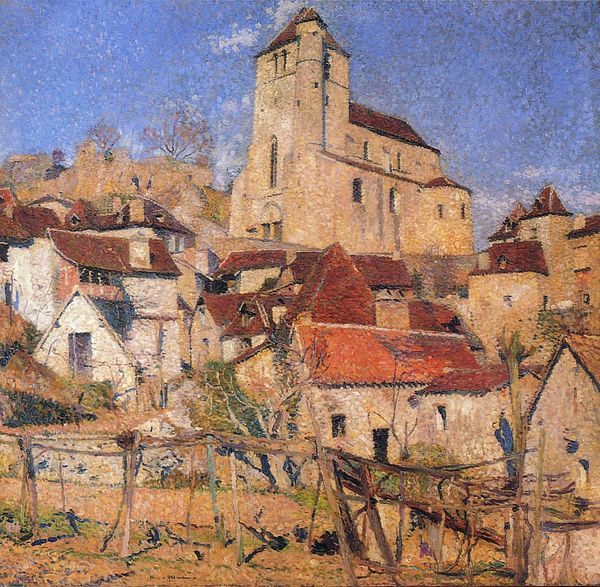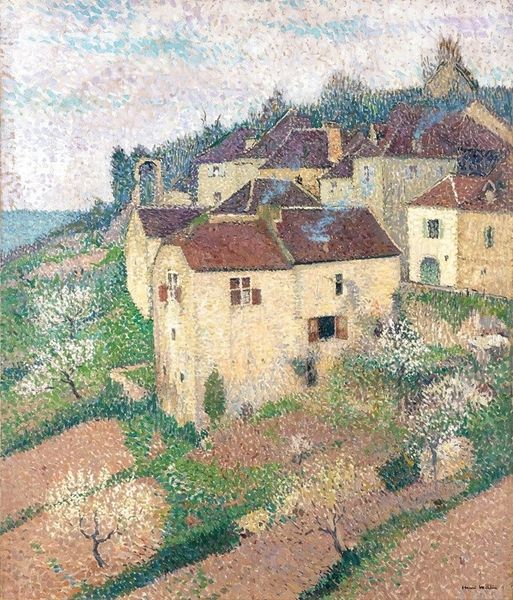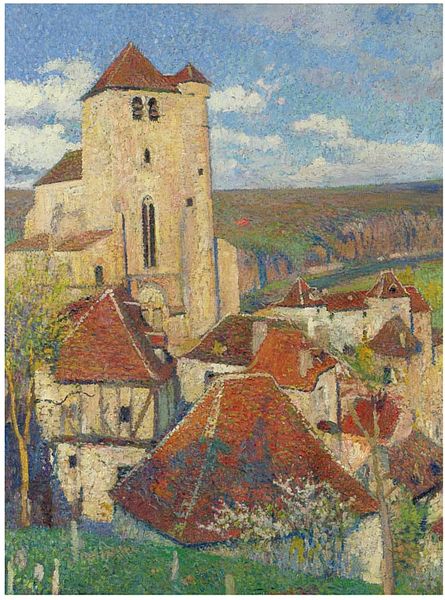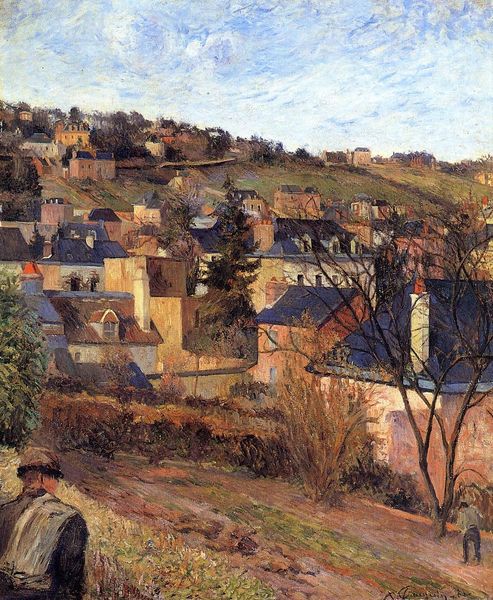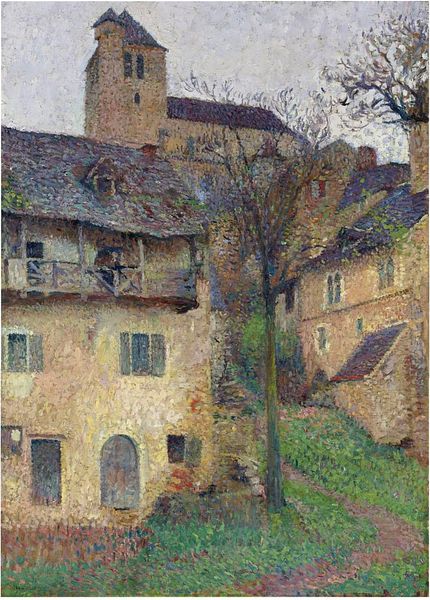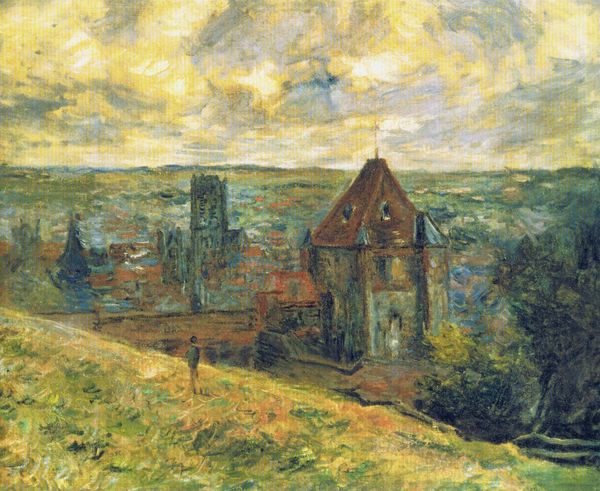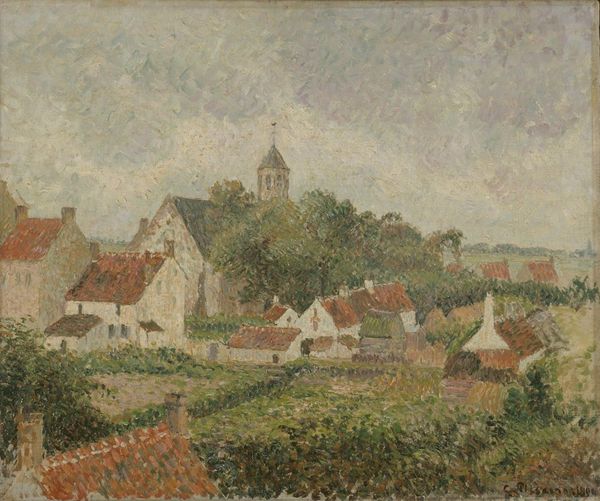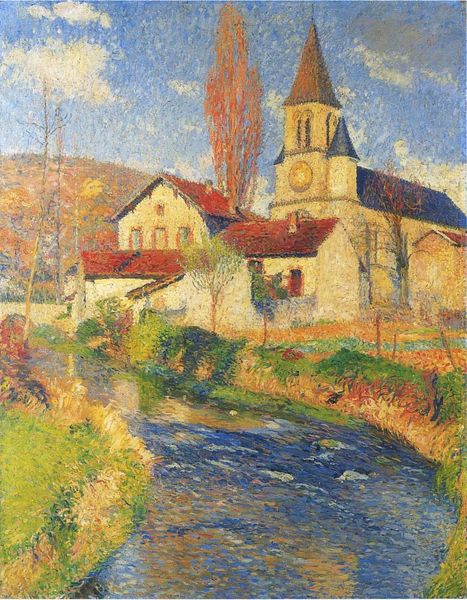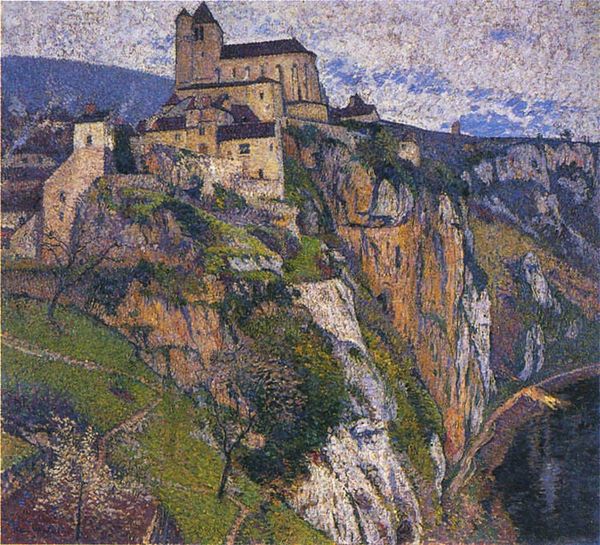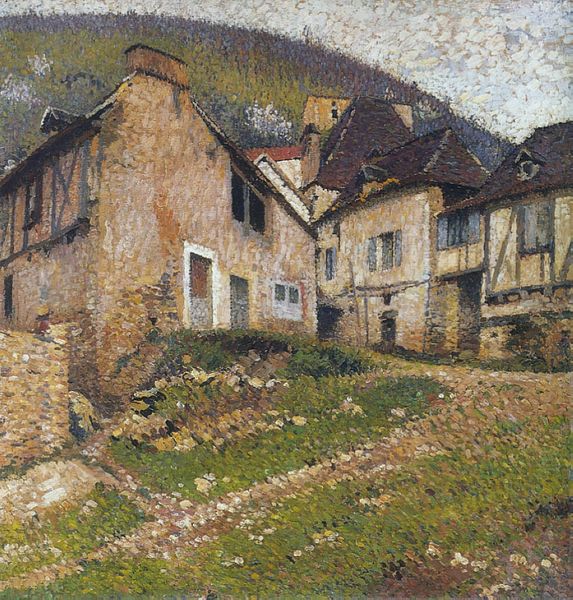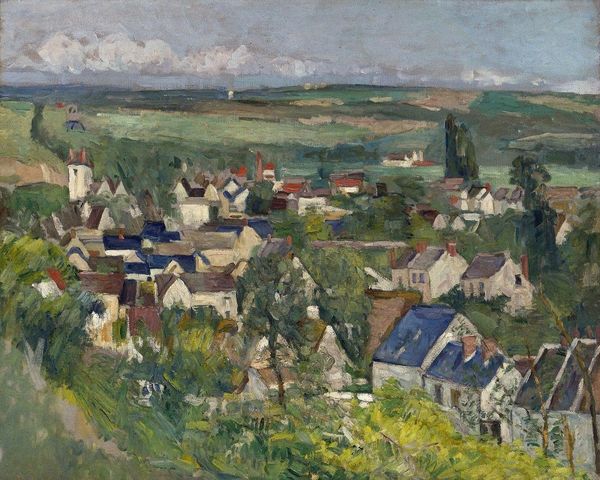
Copyright: Public domain
Curator: Henri Martin painted this radiant landscape, “Saint Cirq Lapopie,” in 1929. Editor: Wow, that title sells it short! I immediately think of fairytales. It's this huddled cluster of ochre and sienna, practically glowing. Is it sunset or just the stone itself? Curator: Likely the latter, accentuated by Martin’s touch. He was working firmly within the Post-Impressionist tradition. See how he applies these almost mosaic-like flecks of pure colour? It gives everything this shimmering quality. Editor: A jewel-toned shimmer. The buildings feel less like solid structures and more like organically grown, sun-baked formations, ascending to that dominant church on the crag. I wonder what informed his vision. What symbolism, if any, did the village of Saint-Cirq Lapopie hold for him? Curator: The village itself clings to the cliffside, overlooking the Lot River, so you are immediately aware of being nestled between land and sky. Martin felt a deep connection to the French countryside; his earlier works often depicted peasant life. This painting feels like an extension of that, a romanticising of rural existence. Editor: Definitely a strong connection between the landscape and its inhabitants; there’s a merging, isn't there? Consider that tower—triumphant!—symbolically towering above. It’s almost biblical in its posture of enduring faith, promising shelter against any looming dark age. And look, thin tendrils of smoke gently ascend as testaments to ordinary lives and common beliefs. Curator: Perhaps! It is tempting to read the church as this kind of monument. Personally, I see Martin prioritizing atmosphere over detailed symbolism, really capturing how the light refracts through that specific space at that particular moment. Editor: True, you can almost taste the golden, almost autumnal light! I feel I can practically smell burning firewood or fresh bread baking. Perhaps faith, in this context, represents more than theological doctrines. Maybe Martin sought to embody what is more a basic faith in daily rituals. The homes with their warm, earthy tones represent hearths where family bonds deepen, offering simple reassurance against life’s darker sides. Curator: I suppose ultimately what makes this painting sing is the marriage of precise observation and a deep, almost spiritual, connection to the subject. Editor: A harmonious blend of place and spirit. One leaves the experience with a feeling of hope and the possibility of enduring values, like love or faithfulness.
Comments
No comments
Be the first to comment and join the conversation on the ultimate creative platform.
